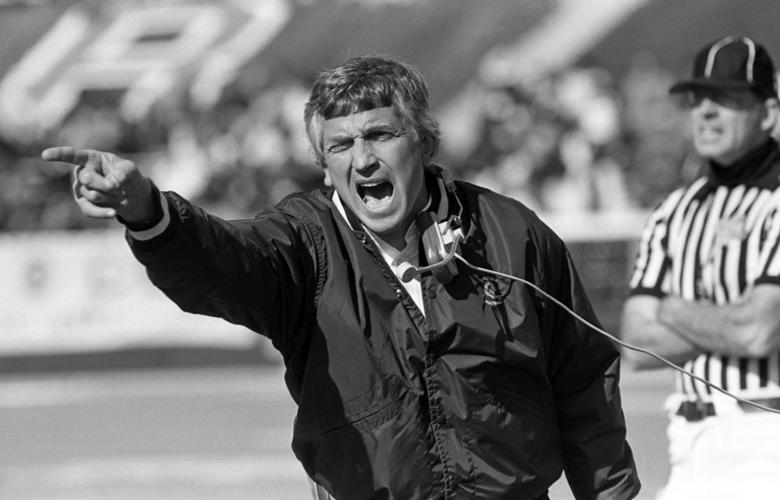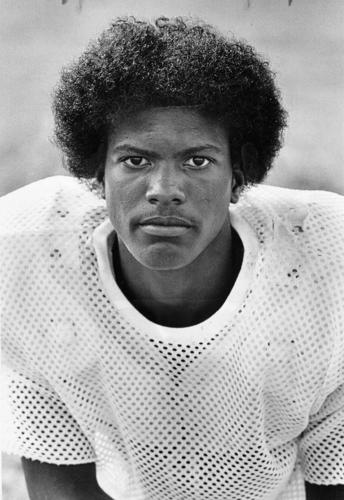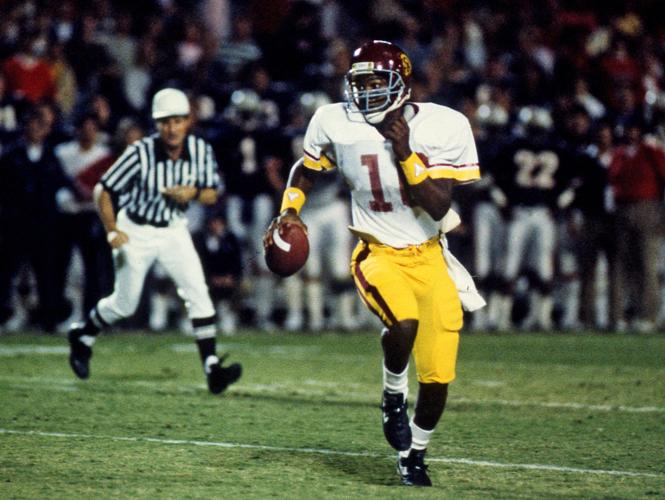Before Larry Smith agreed to become Arizona’s football coach in April 1980, he was told the NCAA was investigating the program for dozens of 1970s rules violations, which included a slush fund and scores of illegal payments made to UA players and recruits.
Smith, who had been the head coach at Tulane, said he was willing to accept the consequences. He hoped for a speedy resolution so Arizona could begin damage control and start moving forward.
“We really feared for recruiting,” says Gary Bernardi, who was Arizona’s recruiting coordinator from 1980-86 and is now on the defensive staff at San Diego State after a career of coaching mostly at USC, UCLA and Colorado. “Did it affect recruiting? Yes. Very much.”
Unfortunately, those NCAA consequences weren’t manifest for three years. Finally, on May 20, 1983, the NCAA placed Arizona on probation, prohibiting the school from playing in bowl games in 1983 and 1984 and from being shown on live television for two seasons.
“The effect will be that we’ve been on probation for five years,” Smith said, accurately describing the ramifications. “These players and coaches never had anything to do with the whole mess, yet they are the ones who are paying the price for the sanctions. It’s truly insensitive.”
Such is the fear for the future of Arizona’s basketball program. Even though it has been 40 years since the NCAA levied penalties against the UA football program, the enforcement process still trudges along at a glacial pace.
The UA might not learn the fate of its basketball program for another six or nine months. Sean Miller’s program has been in the crosshairs of the FBI and NCAA since September 2017.
The same worries that engulfed the UA football program in 1980 now apply to the UA basketball program.
Notably, will recruiting be affected, and if so, to what degree and for how long?
In 1980, the immediate concern was that Arizona’s rising football program — it would climb to No. 3 in the AP poll during the 1983 season — would be crushed in the foreseeable future. But I’ve always thought it went beyond costing the Wildcats bowl appearances in 1983 and 1984.
It cost the UA berths in the 1985 or 1986 Rose Bowl, or both.
It cost them a once-a-century quarterback, Rodney Peete, who instead chose USC over Arizona in February 1984, a period in which all Arizona lacked to win the Pac-10 was a quarterback of Peete’s skill.
Bernardi doesn’t refute that.
“The thing is, we had a good nucleus of leaders, and that’s why we were able to hold it together and come out the other end successfully,” he says now. “We had a lot of meat-and-potatoes guys who turned out to be outstanding players.”
Such as: Pac-10 defensive players of the year Chuck Cecil, Byron Evans and Dana Wells, the school’s best-ever center, Joe Tofflemire, and game-changing kicker Max Zendejas. All were part of the recruiting classes affected by the stigma of an NCAA investigation and probation.
Smith and his staff did more with less from 1981-86, beating No. 1 USC, No. 6 SMU, No. 8 Notre Dame and twice knocking ASU out of the Rose Bowl. It developed two-star and three-star recruits like David Wood, Jeff Kiewel, David Adams, Cecil, Tofflemire, Wells and Evans into all-conference players.
All it lacked was a Rodney Peete at quarterback.

Rodney Peete was a Sahuaro High School star before moving to Kansas City, Missouri.
On the day before letters of intent were signed in February 1984, Smith was in Kansas City giving a final recruiting pitch to Peete, who had grown up in Tucson, played at Sahuaro High School through 1982, and was the son of long-time UA assistant coach Willie Peete, 1971-82, a former Arizona football standout who had joined the Kansas City Chiefs staff a year earlier.
Not only that, Skip Peete, Rodney’s older brother, had been a key receiver for Arizona in 1981 and 1982.
Arizona had a winning quarterback — Tom Tunnicliffe — through 1983, and replaced him with a steady, three-year starter, Alfred Jenkins. But Jenkins was not Rodney Peete, who chose USC over Arizona and ended up leading the Trojans to two Rose Bowls.
Look at the final Pac-10 standings in 1985 and 1986, when the Wildcats were a star quarterback shy of winning the league and playing in the Rose Bowl:
In 1985, UCLA (6-2) won the league. Arizona finished a half-game back at 5-2. On Nov. 9, the Bruins edged Arizona 24-19 in a heartbreaking game at Arizona Stadium.
In 1986, Arizona had its best team under Smith, 9-3 overall. But it lost painful games against UCLA, 32-25, in the final 30 seconds, and 20-13 to USC.
Again, had Peete been Arizona’s quarterback in those seasons, there would not be a 42-year Rose Bowl drought. Arizona would’ve almost surely beat UCLA and USC in 1986 and won the league with a 6-1 record.

USC quarterback Rodney Peete during a game against Arizona in 1986 at Arizona Stadium.
But Peete, a legacy recruit like few others in Tucson and UA history, chose to play for the Trojans rather than for his hometown team. When he signed with USC in 1984, the NCAA probation was only 50% complete.
Said Smith on letter-of-intent day: “The NCAA stigma busts you out of the picture on some guys.” Like Rodney Peete.
Peete started for the Trojans in 1986, leading them to victories over No. 6 Washington and No. 9 Baylor, but USC was flawed — Arizona had a better starting roster except for the QB spot. At year’s end, the Trojans fired coach Ted Tollner.
As if to apply a curse to UA football forever, Smith accepted the USC job in January 1987 and, with Peete as his quarterback, led the Trojans to the Rose Bowl in his first two seasons.

Larry Smith eventually joined Rodney Peete at USC.
Peete wasn’t the only star-level quarterback Arizona was unable to acquire during its long encounter with NCAA investigators. In the winter of 1982, high-ranking quarterback Jim Harbaugh of Palo Alto, California, visited Arizona and was presented a scenario in which he would someday lead the Wildcats, then awaiting NCAA penalties, to the Rose Bowl.
Instead, Harbaugh signed with Michigan. In 1987, he was the Wolverines’ starting quarterback in the Rose Bowl.
From an Arizona perspective, the price of NCAA penalties carries on decades later.








